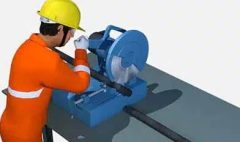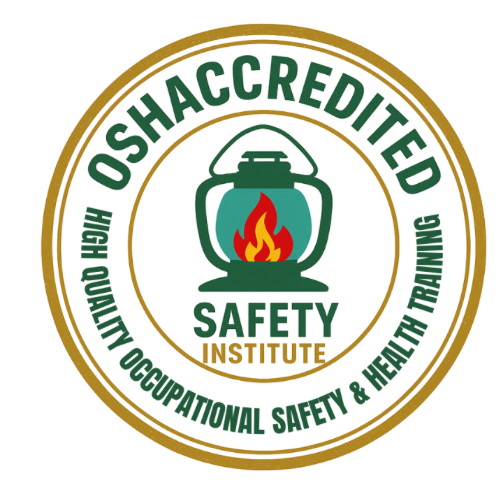OSHA and Online Safety Training for Construction Workers: Preventing Heat Stress
OSHA and Online Safety Training for Construction Workers: Preventing Heat Stress
Introduction: Why Heat Stress Deserves Serious Attention
With climate change and rising global temperatures, heat stress is becoming a growing concern for outdoor workers, especially those in construction, landscaping, and agriculture. Every year, hundreds of workers suffer from serious heat-related illnesses, and tragically, some even die. The Occupational Safety and Health Administration (OSHA) emphasizes the importance of preparing for hot environments by educating employers and workers on prevention strategies. This is where OSHA courses, OSHA training, and online safety training programs play a pivotal role.
By incorporating safety courses into your workplace routine, especially those available online, employers and employees can better recognize, prevent, and respond to the dangers of heat stress.
What Is Heat Stress?
Heat stress occurs when the body cannot properly cool itself due to environmental conditions, physical exertion, or both. It can result in a range of heat-related illnesses, from mild rashes to life-threatening heat stroke. In high-heat workplaces, particularly those outdoors or without adequate ventilation, heat stress is a major occupational hazard.
According to OSHA, employers are required to provide a workplace free of recognized hazards, which includes excessive heat. This makes OSHA training not only important but also a legal and ethical necessity.
Working in Outdoor and Indoor Heat Environments
https://www.osha.gov/heat-exposure
Understanding Heat Stress and Prevention Strategies
https://ehsdailyadvisor.com/2022/10/understanding-heat-stress-and-prevention-strategies/
Types of Heat-Related Illnesses
Understanding the various forms of heat stress is critical for effective prevention and response. Here are the primary heat-related conditions that workers must be trained to identify and manage through safety courses and online safety training.
- Heat Stroke (The Most Severe)
Heat stroke is a medical emergency. It occurs when the body’s temperature regulation fails, and internal temperatures rise above 104°F. Symptoms include:
- Confusion or altered mental state
- Hot, dry skin or profuse sweating
- Seizures or unconsciousness
- Rapid pulse
Immediate action includes calling 911, moving the person to a cooler area, and aggressively cooling them with water, fans, or ice packs.
OSHA courses consistently stress the importance of recognizing and reacting swiftly to signs of heat stroke, as delays can be fatal.
- Heat Exhaustion
This condition is less severe than heat stroke but still dangerous. It typically results from excessive sweating and loss of fluids and salts. Symptoms include:
- Heavy sweating
- Weakness or dizziness
- Nausea or vomiting
- Headache
Treatment involves moving the affected person to a cool place, giving them fluids, and letting them rest. Heat exhaustion is commonly covered in OSHA training for construction and field workers.
- Rhabdomyolysis
Rhabdomyolysis is a serious but lesser-known heat-related condition. It results from the breakdown of muscle tissue due to intense heat and physical exertion. Symptoms can include:
- Muscle cramps or pain
- Dark-colored urine
- Weaknesses
- Swelling
This condition can lead to kidney damage and requires immediate medical evaluation. Online safety training courses help workers identify such less obvious but potentially dangerous symptoms.
- Heat Syncope (Fainting)
Heat syncope refers to a sudden drop in blood pressure due to prolonged standing or rising quickly in hot environments, leading to fainting. It is most common among new workers or those unacclimatized to heat.
Safety courses can help supervisors ensure that new employees are gradually introduced to high-temperature tasks through proper heat acclimatization programs.
- Heat Cramps
Heat cramps are painful, involuntary muscle spasms that occur during or after intense exertion. They are caused by fluid and electrolyte imbalances. Cramps often signal early stages of more serious heat-related illnesses and should never be ignored.
OSHA courses provide specific hydration and nutrition guidelines to help prevent cramps during hot-weather work.
- Heat Rash
Also known as prickly heat, this condition involves skin irritation from excessive sweating. While not life-threatening, it can cause discomfort and reduce worker productivity.
Workers trained through online safety training will know how to maintain personal hygiene and wear breathable clothing to prevent heat rash.
Heat Illness Prevention
Heat Stress Guide
https://www.osha.gov/emergency-preparedness/guides/heat-stress
High-Risk Occupations: Who’s Most at Risk?
Not all jobs are equally vulnerable to heat stress. The following workers face higher risks due to environmental exposure and physical demand:
Construction Workers
Construction often involves long hours in direct sunlight, strenuous activity, and heavy clothing or protective gear. The nature of the work increases body temperature and restricts proper cooling.
Employers should mandate OSHA 10 or OSHA 30 training courses that include heat illness prevention modules to ensure all workers are aware of the risks and know how to protect themselves.
Landscapers
Landscaping work typically involves operating heavy machinery, lifting, digging, and other tasks all-while under direct sun exposure. Heat-related illnesses in this field are common and preventable through OSHA–approved safety courses.
Online safety training allows landscape business owners to ensure every crew member, regardless of location, receives consistent and thorough instruction on heat hazards.
Agricultural Workers
Farm laborers often work in isolated fields without shade or cool rest areas. Their access to drinking water and breaks may be limited, increasing the risk of heat stroke and exhaustion.
Many agricultural employers are adopting OSHA training and online safety training programs to educate both supervisors and field workers on heat safety protocols.
Prevention: The Best Defense
Preventing heat stress involves a proactive approach that includes training, planning, and protective measures. Here are OSHA-recommended strategies, many of which are reinforced through safety courses:
- Acclimatization
Gradually increase workload and exposure time for new or returning workers. OSHA notes that most heat-related deaths occur in the first few days of hot weather.
- Hydration
Encourage workers to drink water every 15–20 minutes, even if they are not thirsty. Electrolyte solutions may be necessary during long periods of exertion.
- Rest Breaks
Provide shaded or air-conditioned rest areas and schedule frequent breaks to allow the body to cool down.
- Appropriate Clothing
Workers should wear lightweight, breathable fabrics and consider cooling gear like neck wraps or vests.
- Supervision and Buddy System
Implement a buddy system to monitor signs of heat stress and designate a trained supervisor to oversee health and safety during hot days.
These practices are core components of OSHA safety training and are easily scalable through online safety training platforms.
The Role of OSHA and Online Training Programs
OSHA mandates that employers provide training on recognizing and preventing heat stress. Traditional face-to-face OSHA training sessions are highly effective but may not always be practical for remote or rotating workforces.
This is where online safety training shines. Benefits include:
- Flexibility: Workers can access modules anytime, anywhere.
- Consistency: Every employee receives the same information.
- Documentation: Employers can track progress and completion.
- Language Options: Multilingual courses accommodate a diverse workforce.
Although the OSHAccredited Safety Institute has an excellent website offering online safety courses they also have a team of OSHA authorized trainers that offer in person OSHA 10-hour and 30-hour courses in construction and general industry that helps workers to stay safe on their jobsites.
Conclusion: Safety Starts with Training
As temperatures continue to rise, employers and workers in construction, landscaping, and agriculture must take proactive steps to prevent heat stress. With proper OSHA courses, OSHA training, and the convenience of online safety training, organizations can dramatically reduce the risk of heat-related illnesses.
By promoting awareness and building a culture of safety, we can protect those who keep our cities built, our lawns green, and our crops growing even under the blazing summer sun.
Looking for effective heat safety training?
Start today with online safety training programs designed to meet OSHA standards and keep your team safe, productive, and prepared for the heat.










